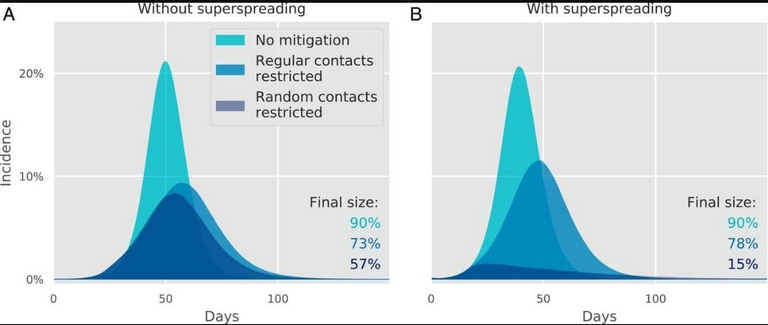
It is believed roughly 80% of transmission is from roughly 10-20% of cases with this virus. Part of what makes this virus so paradoxically difficult to control as infrequent lapses in mitigation can have outsized effects.
"Good enough" mitigation where a majority of people are generally engaging in good mitigation behaviors like mask wearing works well when most transmission occurs from the majority of infections. But it isn't sufficient when you are dealing with a virus like the coronavirus where most transmission is from a minority of infections.
Many cases don't sustain the pandemic and are self limiting. Household studies have had relatively low attack rates. Instead super spreading events have characterized a significant part of this pandemic.
These superspreading events are through a combination of factors. Often some people are highly infectious, either because the event coincides with their peak infectiousness, or they have higher viral loads than others. Often it is the conditions of the event itself, with large, crowded indoor gatherings or due to large contacts. And it can also be because of poor behaviors of the index case like not wearing a mask, or singing or yelling for extended periods. Often all three are present.
Religious gatherings in particular have been the site of numerous super spreading events. They often are perfect environments: large gatherings, often indoors, often with lapses in mitigation like mask wearing, often with sustained talking and singing, and with a lot of intermixing and random social contacts.
This is no better seen in India.
A Tablighi Jamaat gathering in a mosque in Delhi in March 2020 was linked with over 4,000 cases. And most recently the Kumbh Mela pilgrimage going on now has been linked with already over 2,000 cases. In both cases, the true transmission total is likely significantly more.